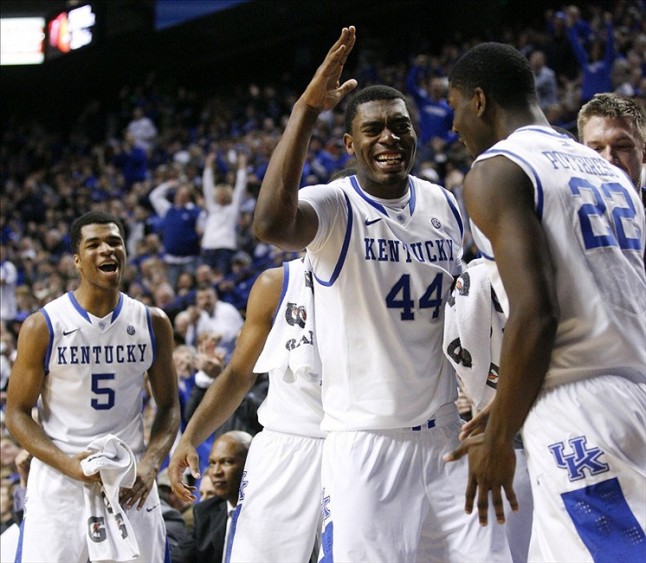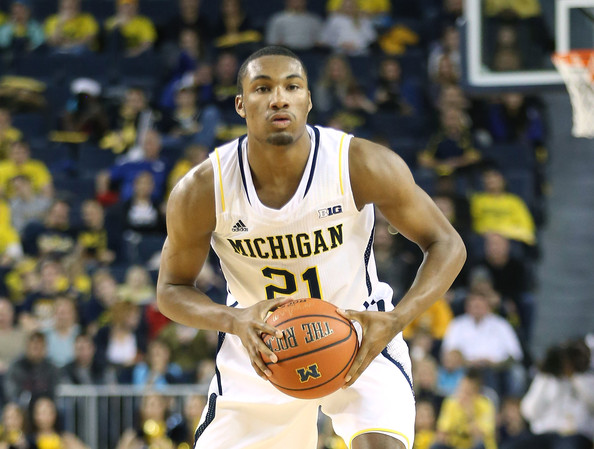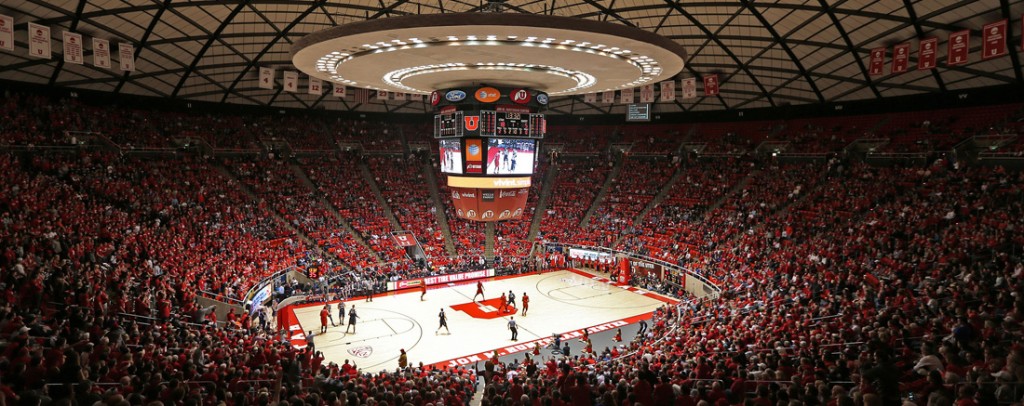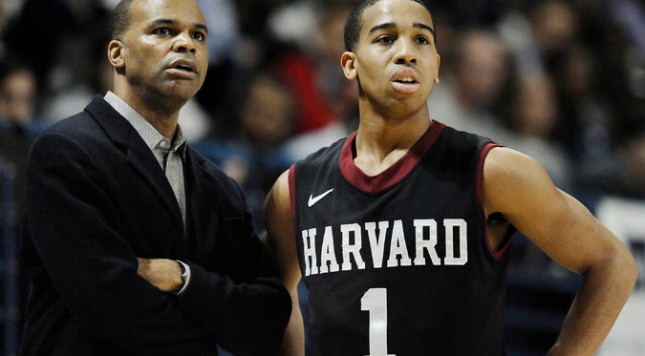Individual players — which ones rise or fall — shape seasons to a considerable extent. Yet, while the solo performer occupies a prominent place in basketball, the way whole rosters mesh (or fail to do so) is an even more central component of the journey from November through early April. Look at Kentucky last season.
The Student Section’s lead basketball writers, Scott King and Steve Fetch, offer their most intriguing roster situations while also exploring “The Next Dayton” in our latest roundtable. They’re joined by TSS managing editor Matt Zemek.
*
Question 1: Which roster situation interests you the most and is likely to hold your attention through the full season?
Scott King:
On Twitter @BearcatsBlog
I want to give some really good, hidden-depth answer, but I’m going with Kentucky. The Wildcats are loaded with a ton of returning talent: Cauley-Stein, Aaron Harrison, Andrew Harrison, Poythress, Dakari Johnson, Lee — that’s a lineup and a half right there. Plus, they have another great recruiting class with Karl-Anthony Towns, Devin Booker, Tyler Ulis, and Trey Lyles. Kentucky played in shifts the first two exhibition games. There a million combos for this team, all of them good. How they gel is going to be such a key to the season. Plus, UK has a player named Sam Malone from Massachusetts. Even the walk-ons have stories.

Remember Robert Goulet’s ESPN mini-song about Rick Pitino’s Kentucky teams in the mid-1990s? There’s that same feel about John Calipari’s newest Kentucky team… but after the 2013-2014 regular season, a little patience is required before judging just how good these Cats are going to be. (By the way: “We are Kentuck-YYYYYYYYYYYYYYYYY.”)
*
Steve Fetch:
On Twitter @13fetch
I’m interested to see what Michigan does. John Beilein creates stars pretty much out of thin air, and he’s probably going to do so again with Caris LeVert. Zak Irvin looks to be due for a breakout year as well, but mostly I want to see how they re-tool without Nik Stauskas, Mitch McGary, Glenn Robinson, Jordan Morgan and Jon Horford.

John Beilein is a freakin’ wizard, and Zak Irvin might be the newest breakout player at Michigan who will cast a spell over Big Ten opponents this season.
Matt Zemek:
On Twitter @SectionMZ
I thought about Oklahoma State, with Marcus Smart’s departure creating a situation in which more players might contribute and share the ball, but the Cowboys were dogged by injuries last season. More to the point, Travis Ford needs to coach better, so that’s not necessarily the roster I’m looking at the most — coaching and injuries will affect OSU’s situation a little more than player makeup.
The roster I’ll choose to focus on is the one at LSU. The SEC has a number of programs with unactualized potential, and the Bayou Bengals serve as one such example under head coach Johnny Jones. Anthony Hickey has transferred — to Oklahoma State, ironically enough — and three other players who received at least 25 minutes per game last season are now gone. Four of LSU’s six core rotation players are no longer in the mix, leaving Jarell Martin and Jordan Mickey as the core pieces.
I’ll be very interested to see if the Bayou Bengals find addition by subtraction, gaining better contributions from the several bench players who are coming back and the incoming freshmen Jones landed on the recruiting trail. LSU is part of a larger storyline this season: Will the SEC’s almost-but-not-quite programs — there are many of them — display better talent on the floor, or will the conference’s teams show that their talent is evident, but not guided well by the coaches in the conference? This could be a coaching issue (which is clearly the case at Oklahoma State), but let’s see what happens with LSU this season before rendering an overly entrenched verdict on Johnny Jones.
*
Question 2: What’s your foremost non-Dayton example of a roster without superstars that should blend together the way the Flyers did in the NCAA tournament last season?
Matt Zemek:
Utah is an example which comes to mind. Delon Wright and Jordan Loveridge are highly productive players, but the problems that held back the Utes last season were team issues more more individual failings.
Set aside the weak non-conference schedule which destroyed the Utes’ computer profile in March. The on-court reason Utah didn’t make the 2014 NCAA Tournament was that the team won only two true road games, one of them against Pac-12 cellar dweller USC, a team in total rebuilding mode in the first season of the Andy Enfield era in Dunk City West. Outside of a late-season win in Berkeley against California, Utah could not avoid falling out of bed on the road in the Pac-12. The team was that bad in handling adverse situations.
The simple process of absorbing a full season’s frustrations, of learning how to deal with game pressure and everything that comes with big-stage basketball, should make a veteran Utah team equipped to take the next step. This is a team that will naturally benefit from Wright and Loveridge being better, but it’s a team that will prosper more centrally because everyone on the roster, including the supporting cast, grows up. That’s the primary reason the Utes will put on their Dancing shoes in March and be a very tough out once they get there.

Utah can win in the Jon M. Huntsman Center. The Utes need to show that they can regularly win in places other than Salt Lake City.
*
Steve Fetch:
I’m going to say San Diego State. The Aztecs don’t have Xavier Thames anymore, so scoring is going to be a huge issue. However, they were so great defensively last season, and a lot of that should carry over to this season. They have some guys who are merely okay offensively, but mostly it’s a lot of guys pitching in. They’re not going to do anything sexy, but they’re going to force the other team to shoot 40 percent or worse, and they’ll win plenty of games.
*
Scott King:
Harvard (pictured in the cover photo for this story). The Crimson are a fringe top-25 team according to the pre-season rankings, so they are kind of an example of a good team. They are from the Ivy League and you can name none of their players, so they count for me. Wesley Saunders is the closest thing they have to a star, but he used under 25 percent of their possessions a year ago. This is a very well balanced team that should get a decent seed in the 9-12 range and can make a lot of noise.

